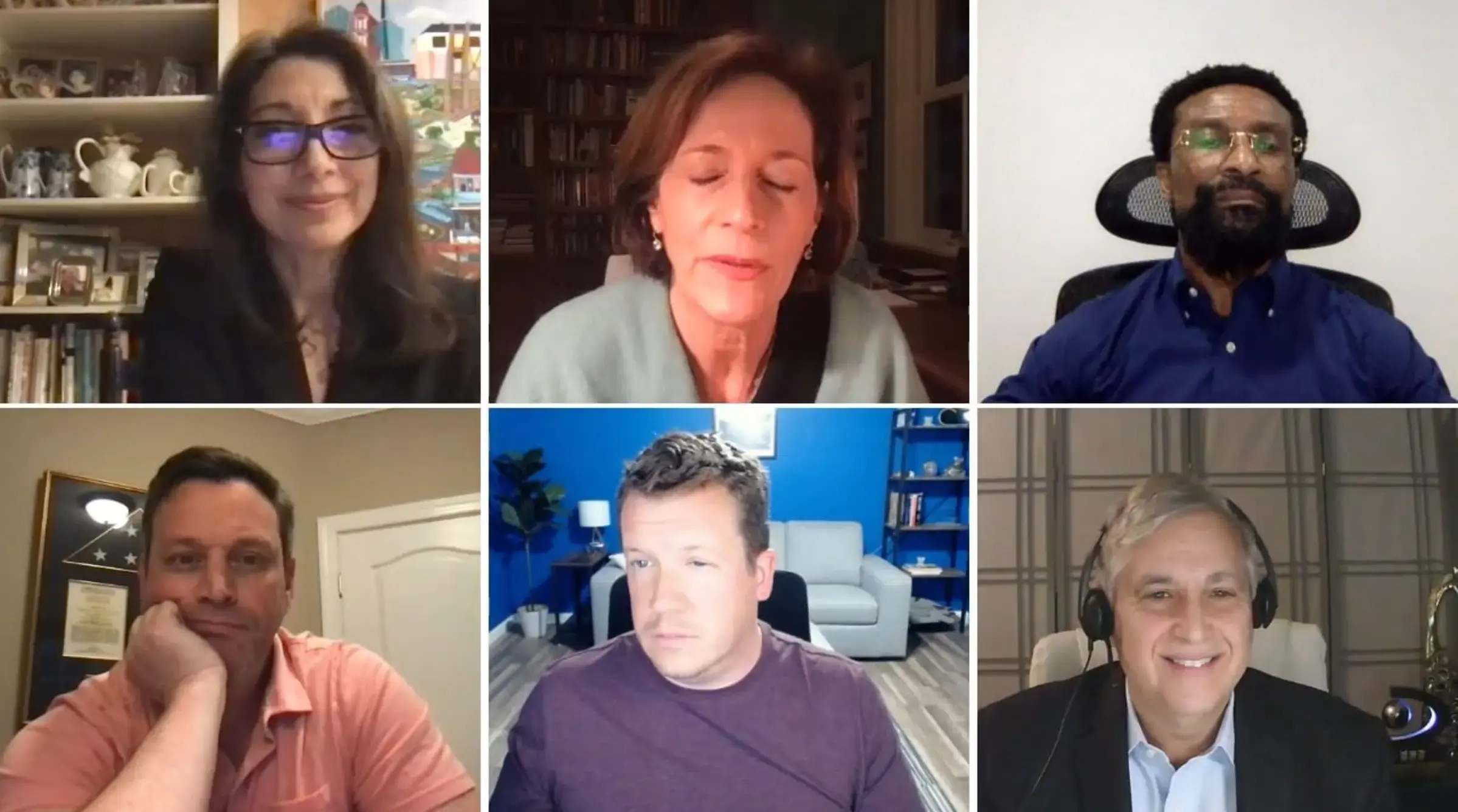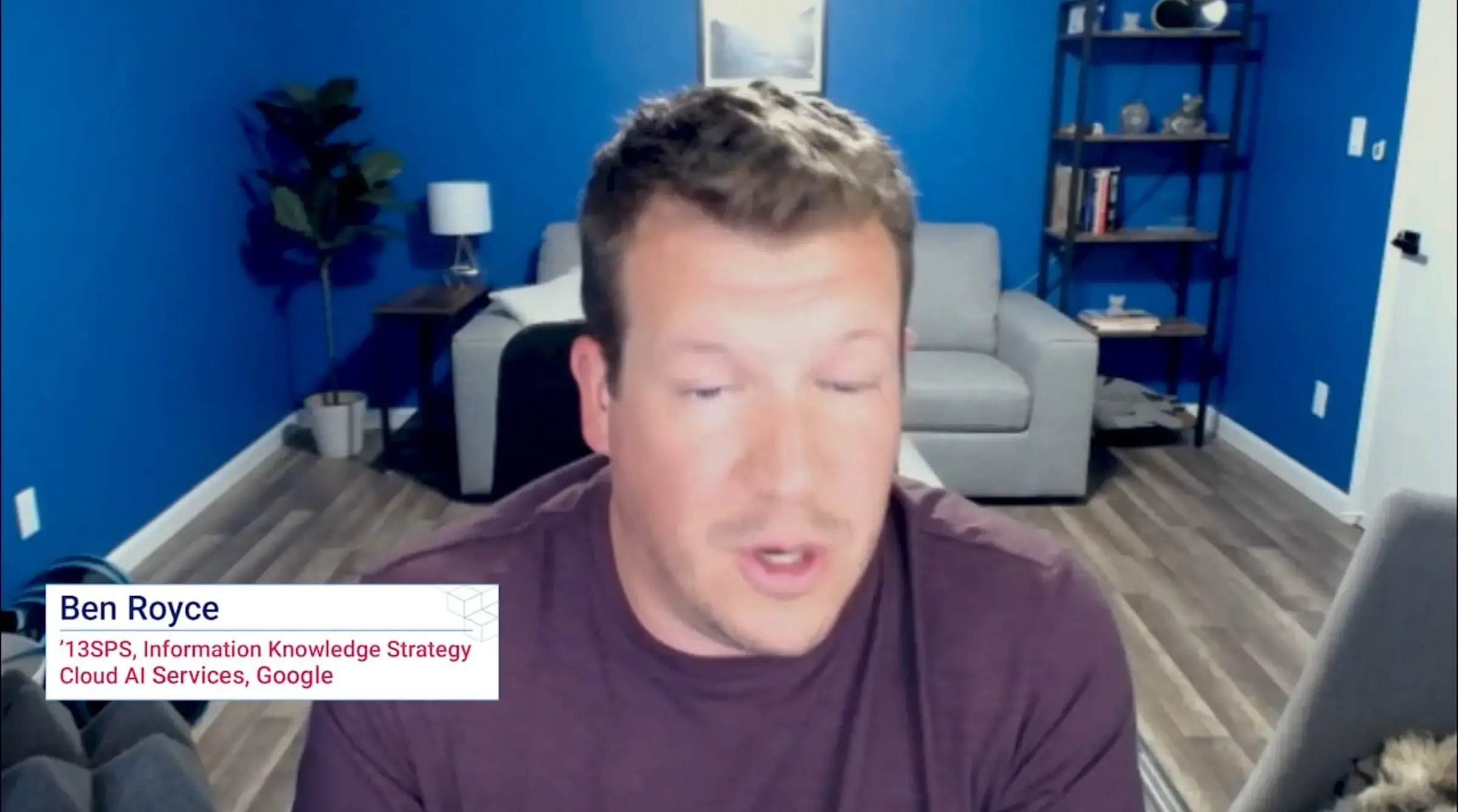On March 11th, Beth Semaya, Ph.D., Associate Dean of Academic Affairs and Interim Director in the M.S. in Information and Knowledge Strategy program, led a discussion on Game Time Decision Making in Times of Disruption, as part of Columbia’s Frame Your Future series. She was joined by panelists, faculty, and corporate leaders whose insights are integral to Columbia’s Master’s programs in Information and Knowledge Strategy and Human Capital Management.
If the COVID pandemic has proved anything, it’s that the unexpected can occur like a bolt out of the blue. Making decisions in disruptive situations is no longer exceptional. Increasingly, this has become the norm. Our panel of experts gathered to share their experience on how to make good decisions when the way forward is unclear and potentially treacherous. Topics covered the intersections of data and emotion, intentional leadership, agility within corporate structures, as well as the democratization of information and the ever-present shadow of bias.
Here are some of the key practices the panel discussed.
1. Sound decisions require agility—especially when speed is driving things
According to Moses Adoko , Ph.D., Chief Knowledge Officer, NASA, Goddard Space Flight Center, “The complexity of NASA’s missions and programs can be understood from the standpoint of a set of metrics. These include system performance, cost, and risk management.”
When you are landing vehicles on Mars, obviously a lot of things can happen that are not planned for. This is why agility and quick thinking become essential. As Adoko put it, “In our environment, agility in decision making also means being flexible, while having the system’s view of your actions or inactions in decision making. Agility means moving efficiently, but also knowing the impact of your decisions at interface points, project units, soft systems, budgetary needs, and your risk profile.”
“Reviews are important as well,” he added. “At NASA we take the review process very seriously because it allows us to pause—it’s what we call a Review Gate. We have a set of metrics, and no matter how fast you are going, when you get to a Review Gate, you have to pause. Your peers come in and ask pointed questions to find out if you are ready to proceed to the next phase. This way, before launch, we can show that we’ve done all the tests, all the validation—that we are ready; we can confidently stand behind the system. Speed and agility are features of any enterprise, but you have to plan pauses to prove out your plan and your systems. The Review Gate allows us to do that.”
On the topic of agility, Diane Gherson, Former Senior Vice President and Chief Human Resources Officer, IBM, had this to say, “IBM is a culture of curiosity and learning. When we were transitioning our portfolio, we told employees that we expected them to unlearn what they knew and learn all the new stuff. This started at the senior level. They published the courses they were taking, and this became an organizational transformation that reimagined 60% of our portfolio over five years.” Agility is both a short-term and a long-term tool.
2. Leadership with intent is a crucial part of decision-making
From being agile in space and through organizational change, the panel moved to decision-making at sea. Jordon Sims, Adjunct Faculty in the M.S. in Information and Knowledge Strategy and Founding Partner at Imperium Global Advisors, at one time served as a nuclear-trained submarine officer in the U.S. Navy. He spoke about leading in an extreme environment, such as a submarine. “We have no shortage of data coming in from a myriad of sensors,” he said. “While the data informs us of what we need to know, it comes down to a mix of data processing, data capabilities, and leadership style to strike the balance that ultimately delivers successful outcomes.”
“The goal of data in any organization is to make as many of the unknowns known,” he continued. “This helps you consider alternatives and weigh priorities. Often, there are competing sets of data, so priorities change. Leadership is critical—you can’t let data alone dictate the next course of action. What data enables the team to do is process what the current situation is at point A and where we need to arrive at point C. You also need to allow diversity of input from the team (their own intuitions and analyses) of the data. You must pair that with an intent-based leadership approach rather than simply following data. Otherwise, you may be answering the wrong question to solve the wrong problem.’
3. The shadow of unconscious bias and human input in the decision-making process
Diane Gherson offered a cautionary tale. “We had a situation at IMB where we did a ‘hackathon’ and we found that the men were doing better than the women. Why did men do better? They grew up on digital games. And early on, there weren’t computer games designed for girls. So, when you dig in deep enough, you can find that unconscious bias is impacting your thinking.”
Added Steve Safier, Ph.D., Interim Program Director, and Lecturer, M.S. in Human Capital Management, “Data is only an input and only goes so far. We have to filter in culture, innovation, risk, and continuous learning as we go.”
Host Beth Semaya asked Safier about the interplay of data and individuals’ needs.. Safier spoke about the topic from the point of view of those who are studying these questions at Columbia. “We tell our students, Safier said, “that one of the core management challenges is the fact that organizations have needs and individuals have needs. How do we balance the two so that there is a sweet spot where both can thrive? One of the conflicting requirements around decision making is how do individuals see themselves fitting in?” Safier tossed out some of the questions individuals struggle with:
- How do I fit into the organizational structure?
- What is the culture of psychological safety?
- What about my job? My career? What am I worried about? Am I going to be second-guessed?
The requirements can be conflicting. While organizations consider access to data, individual data is more often around how people are feeling about their jobs and their situation.
Said Safier, “It’s a complex constellation of decision-making for the individual, the individual within the structure, and the structure within the culture.”
4. Data silos are the enemy
Semaya asked Ben Royce, Lecturer in M.S. in Information and Knowledge Strategy and Business Development, iCloud services, Google, “What is Google’s decision-making culture and its defining characteristics?
“Decisions,” he remarked, “are always data-driven. But you have to have historical context around data to make decisions.” Royce suggested that organizations question:
- How was the data collected?
- Under what conditions?
- From who?
- What is the sample size?
He explained that this is all part of setting data quality standards. What really helps data-making decisions is ensuring that everyone has access to the underlying data—"because,” he added, “data silos are the enemy. You will get people in one area who come up with insights based on the data when it’s not their main job to do that. This can reveal unexpected insights. But it’s surprising how often you see two teams or two individuals do very detailed, thoughtful analysis with two different approaches and come up with two completely different conclusions.”
To surmount the data silos problem, Royce proposed training. “Training,” he commented, “helps people cover all the potential what-ifs, think through the intangibles, and address decision-making across teams and across the enterprise. It means organizations can capture lessons learned and make them actionable. We can install all the technology needed,” he said, “but how do we humanize it through all the intangibles?”
5. Democratization of information creates requirements and opportunities
“I think social media has completely changed the game,” said Diane Gherson. “It used to be that decisions were made by the experts. Now, we can all be involved and democratize decisions; particularly the ones that matter to people. For example, let’s say there are parts of your company’s healthcare plan that you don’t like. Well, now you can actually be part of redesigning it. It gives agency to more people and allows for more perspectives to a decision that maybe the experts didn’t know about.”
She offered two things that make a difference:
Transparency: “Today, “Gherson said, “we see people resigning or getting fired as a result of personal behavior that comes to light. This wouldn’t have happened in the old days, but social media makes it hard to keep secrets.”
The feedback loop: “For instance,” she continued, “let’s say you’re a leader who has just done a survey, asking colleagues what they like about you and what they’d like to see change. At IBM, leaders have to sit down with their team and share this information. They talk about what they learned, what they’re going to do differently, and what kind of help they need from team members. It’s a frank discussion, but if you’re not willing to get the feedback, then you’re not present as a leader.
6. Have a network of decision-makers you can rely on
Beth Semaya wrapped up the discussion with this question: “Which human do you go to when decisions are really hard?”
Some of the panelists spoke about the importance of having a network of alums and peers who work through the same challenges in their professions. Others spoke of turning to the internet with ideas. As Jordon Sims put it, “I go to the internet and I post the idea that I think is best because if you’re wrong, the internet will let you know very quickly.” But for Moses Adoko, the answer was simple, “I go to two people. One is a trusted mentor who has walked my path, an older person who has more experience than I have. Then I go to a younger person who I am mentoring. I get two data points, two points of view from two people I trust. Then I review each piece of information and make my decision.”
The panel covered a wealth of territory, touching on the knowledge and tools required to keep organizations stable in times of disruption. This discussion took place as the COVID-19 pandemic began to change the methodos in which people interact, make decisions, and attempt to predict outcomes, while adapting to a new normal. Since then, we’ve seen cyber hacking on the rise and nations struggle with when and how to return to work. In the end, it comes down to leadership, and Columbia University’s Master’s programs in Human Capital Management and Knowledge Strategy both offer the way forward.




